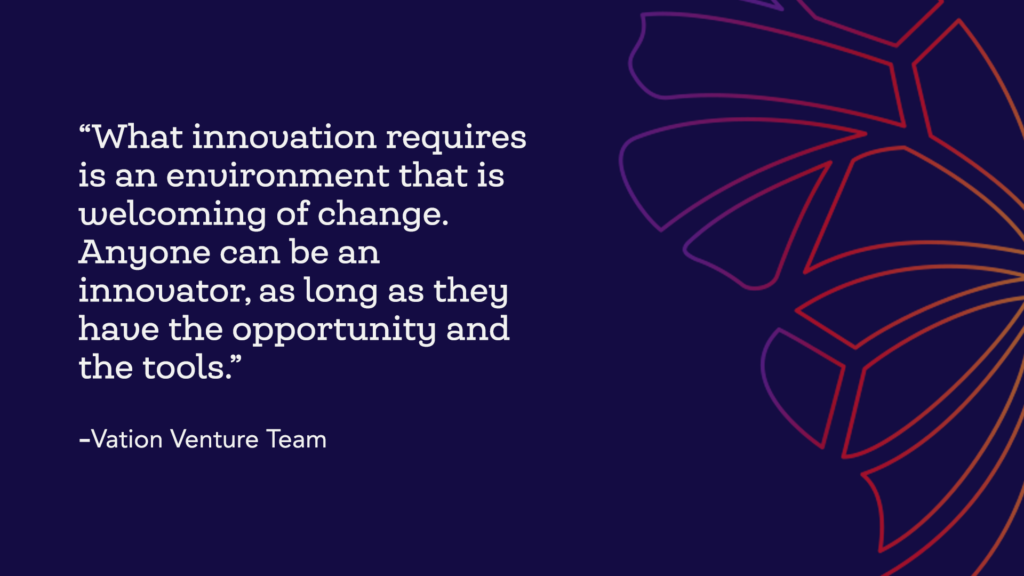As educators, our ultimate goal is to prepare students to meaningfully and innovatively gain, depict and use knowledge to be adaptable, resilient, and effective in their learning environments, workplace, life, and society. However, more and more reports and articles state that learning is still being compared to the “mug and jug or chalk and talk” model and learners’ innovative and adaptive skills are not being developed to function effectively in the workplace and society. One of the main reasons for this is we are too focused on preparing learners to memorize and regurgitate information when taking tests to show that they are ready, or not, to move from one grade level to the next and then to college, instead of having them spend time actively and innovatively using knowledge gained.
A Gartner skills gaps analysis found that “64% of managers don’t believe their employees can keep pace with the evolving skills needed while 70% of employees don’t believe they have mastered the skills needed for the job they have.” This data supports other reports and articles that also share the concern about how we are not preparing our students to be innovative and effective in the workplace and society.

Starting now, educators need to focus on innovation in education by releasing innovative learning to students. Educators, let’s push to be open to change. Whether we are educators supporting students at the K-12 and tertiary levels or in the workplace, the only way to do this is to release innovative learning to students and give them full autonomy and extensive opportunities to innovatively represent knowledge gained.
Generally, educators have been conditioned, whether it be by those who lead us or by our own learning cultures, to keep learning inside of the box, and to maintain the fears and beliefs that learners can’t be innovative. A question I often ask is, “Is the fear of innovation about the learners’ capabilities or our own?” We must replace these fears and mindsets with the growth mindsets that all students are innately gifted and talented and are capable of being uniquely innovative.
So, what is innovation and innovative learning? I define innovation as, “the process of generating new limitless, creative, out-of-the box meaningful ideas, methods, and products that replace or improve existing products and techniques to create value in our learning environments, communities, workplace, and world. Innovative learning and innovation are not impossible!

The opportunities and tools that learners need in education are ones that allow them to extensively engage in researching, creating, exploring, questioning, designing, ideating, collaborating, prototyping, revising, and so much more to develop and create “final for now” new and revised innovative products. Products here refer to any new ideas, methods, creations, or artifacts that are meaningfully innovative. To profoundly impact our learners’ unique innovative skills, it is important to understand that these products must also be born from engaging in authentic project-based and phenomenon-based learning communities, and in real-world partnerships to be meaningfully innovative beyond the classroom walls.
The authors of Innovator’s DNA, Hal Gregersen, Clayton M. Christensen, and Jeff Dyer, engaged in a six-year study to discover the habits of innovative entrepreneurs, executives, and individuals who started innovative companies or invented new products. Their research led them to discover the innovator’s DNA skills of associating, questioning, observing, experimenting, and networking. They noted that “each individual we studied had a unique innovator’s DNA for generating breakthrough business ideas.” Our students already possess their unique innovator’s DNA, all they need is educators who will release innovative learning to them and provide them with opportunities to hone their skills.
My question to us is, how are we as educators adding to learners’ unique molecular structures that fabricate the DNA of innovation?
This “final for now” SAGE Innovative Learning Framework consists of a compilation of steps I used as a teacher and instructional coach that can help you start or continue your journey of releasing innovative learning to students.
Step 1: Set high standards, expectations, and mindsets
- Share rubrics, tasks, expectations, and exemplars of authentic innovative products with learners to ensure that they have a deep understanding of the high levels of excellence and innovation required to meet and surpass when creating products to represent their knowledge for real-world tasks and problems.
- Set aside time to address learners’ questions and needs to provide clarity, and to focus on innovative mindsets development. Studentsneed to know that you have confidence in their unique abilities and that the development of skills, mindsets, and products is an ongoing focus and journey.
Step 2: Adopt innovative learning pedagogical strategies
- Incorporate innovative learning pedagogical strategies such as active and experiential learning, phenomenon-based learning, inquiry and problem-based learning, research, literacy across content, culturally responsive teaching, choice, feedback, learning products, personalized learning, and more.
- Create opportunities for learners to partner and collaborate with technical experts and their communities. Ensure that all learners are given opportunities to be authentically engaged in researching, investigating, questioning, creating, and more, to surpass Bloom’s Taxonomy high cognitive domains and elements shared in rubrics and exemplars.
Step 3: Give learners the autonomy to guide their learning
- Give learners the opportunity to take charge of their learning and to be self-directed and active knowledge builders and creators of products and solutions based on their experiences, learning styles, real-world connections and their interests.
- Allow learners to explore and identify problems they want to solve and generate their own tasks and questions to guide their learning. Ensure that focus is placed on the learners’ styles, interests, strengths, and paths at all times, instead of that of the educators’ styles and interests. Adopt the mindset that all learners are innovative learners and give them the power to unleash their creativity.
Step 4: Engage learners in engineering design-thinking processes
- Provide learners with extensive opportunities to engage in the engineering design-thinking processes of metacognition, brainstorming, ideation, prototyping, reflection, evaluation, revision, and redesign when reexamining the problem or task and the prototype to create the most functional, meaningful, and well-defined solution and product.
- Ensure that innovative learners use elements shared in rubrics, exemplars, and self-given and collaborative feedback to revise products and solutions to surpass all expectations in generating the most innovative solution and product.
These steps are just suggestions for releasing innovative learning to students because I would be amiss if I asked you to follow them verbatim in an era of innovation or as you read a blog that is focused on innovation and developing each person’s unique innovative skills. However, as a coach, what I do ask is that you use them as a guide and inspiration to create and develop your personalized steps for releasing innovative learning to learners. While I understand that testing is still a large part of our education system in the U.S, it doesn’t mean we can’t release innovative learning to students each day. When we do so, we allow them to develop their unique innovative DNA structures, create at high levels and meaningfully use knowledge gained. As a result, they will be able to pass any test, something I can attest to.
Our learners are in dire need of having innovative learning released to them! How do you plan on using ideas shared here and others to release innovative learning to students?
To hear more from Cherry-Anne, connect with her on social media (@Chemelnalis)
Resources:
Allen, J. (2019, October 09). The Problem Isn’t A Teacher Shortage: It’s A Lack Of Innovation In How Teachers May Work. Forbes. https://www.forbes.com
Gregersen, H., Christensen, C., Dyer, J. (2009, December). The Innovator’s DNA. Harvard Business Review. https://hbr.org/2009/12/the-innovators-dna
Thompson, S. (2022, January 09). What is Innovation in Education and Why It’s Important. https://corp.kaltura.com/blog/what-is-innovation-in-education
Thompson, S. (2023, July 20). Innovative Teaching Strategies. https://corp.kaltura.com/blog/innovative-teaching-strategies
Vation Ventures. (2023, February 03). Why is Innovation so Difficult https://www.vationventures.com







